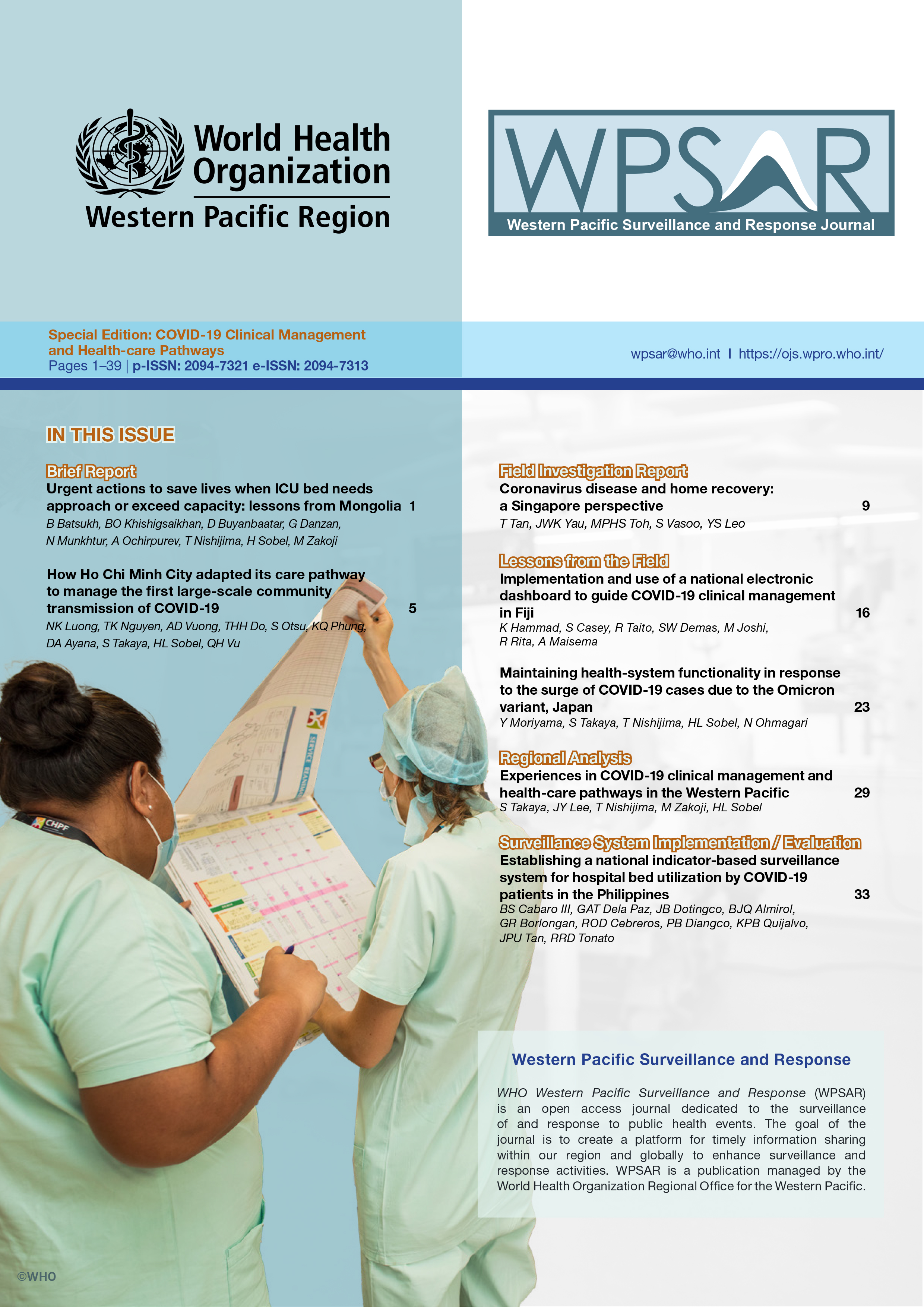Maintaining health-system functionality in response to the surge of COVID-19 cases due to the Omicron variant, Japan
DOI:
https://doi.org/10.5365/wpsar.2023.14.5.1048Keywords:
COVID-19, SARS-CoV-2, disease management, aged, JapanAbstract
Problem: The Omicron variant of severe acute respiratory syndrome coronavirus 2 caused the largest surge of coronavirus disease (COVID-19) cases in Japan starting in the summer of 2022. We describe the mechanisms introduced to provide appropriate health care to all Omicron cases, provide appropriate health care to all non-COVID-19 patients, and protect health-care workers (HCWs) while providing necessary health services. Optimization of care for elderly patients was particularly important.
Context: Japan is home to 125 million people, of whom 28.6% are 65 years or older. Between January and June 2022, the country experienced 4.3 times more COVID-19 cases than in the previous 2 years (7.3 million vs 1.7 million).
Action: To adjust care pathways, inpatient treatment capacity was increased, a home-based care system was established, and an on-site treatment scheme at long-term care facilities was started. Among essential health services, disruption of emergency care became most noticeable. Administrative and financial support was provided to hospitals with emergency departments to maintain emergency medical services. To protect HCWs while maintaining hospital services, flexible exemptions were introduced to enable those who became close contacts to return to work, and broadly targeted contact tracing and testing in case of nosocomial outbreaks were all helpful.
Outcome: As a result of the adjustments made to inpatient capacity and patient flow, bed occupancy for COVID-19 patients decreased, mostly because many patients were cared for at home or in temporary-care facilities.
Discussion: From this study, we extracted two essential lessons to aid in current and future health emergencies: how to balance the provision of acute medical care for elderly patients and maintain their well-being; and how to maintain essential health services.

